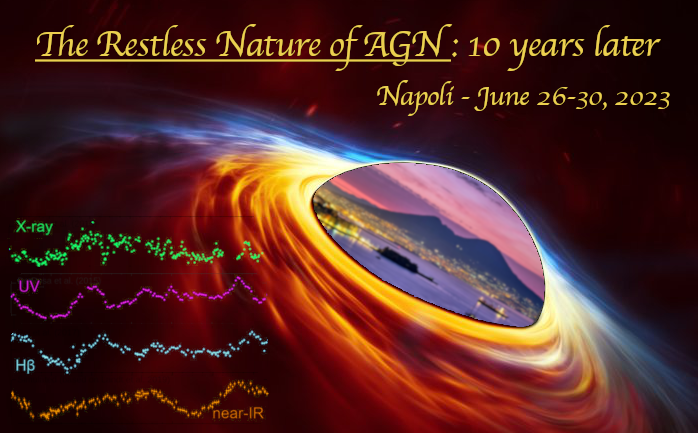Speaker
Description
Quasars are a class of objects in the Universe with very apparent flux variation. UV/optical variability of such sources has attracted particular attention. The radiation in this band is thought to come from the accretion disk. As the central dynamical region of a quasar, the accretion disk is theoretically believed to be related to structures such as the corona and emission line region. Studying the correlations between UV/optical variability and physical processes occurring in these structures can help to constrain and improve the relevant physical models.
We make a one-parameter characterization of UV/optical variability amplitude of quasars using the famous Sloan Digital Sky Survey 10-year light curves in the Stripe 82 region, and explores the statistical correlations between AGN UV/optical variability (from the accretion disk) and X-ray emission (from corona), and between the variability and UV/optical line emission (from line emitting regions). We find that there is an intrinsic positive correlation between UV/optical variability and X-ray loudness, and this correlation occurs mainly at long timescales. This result prefers the physical picture depicted by the thermal fluctuation model of accretion disk, i.e., both the corona heating and UV/optical variability are related to magnetic turbulence in the accretion disk. Then we find a positive intrinsic correlation between the variability amplitude and the equivalent width for the broad Mg II line, the C IV line and the [O III] 5007 line. We point out that the possible physical reason behind such correlation could be: a more variable accretion disk will have a harder and bluer spectral energy distribution and therefore increases the emission line equivalent width; on the other hand, a more variable accretion disk may launch more clouds, thus increasing the covering factor of emission line region.
In the future, with the rapid progress of time-domain surveys, more extensive/systematical studies of AGN variability could significantly promote our understanding of AGN variability and relevant physical processes.

